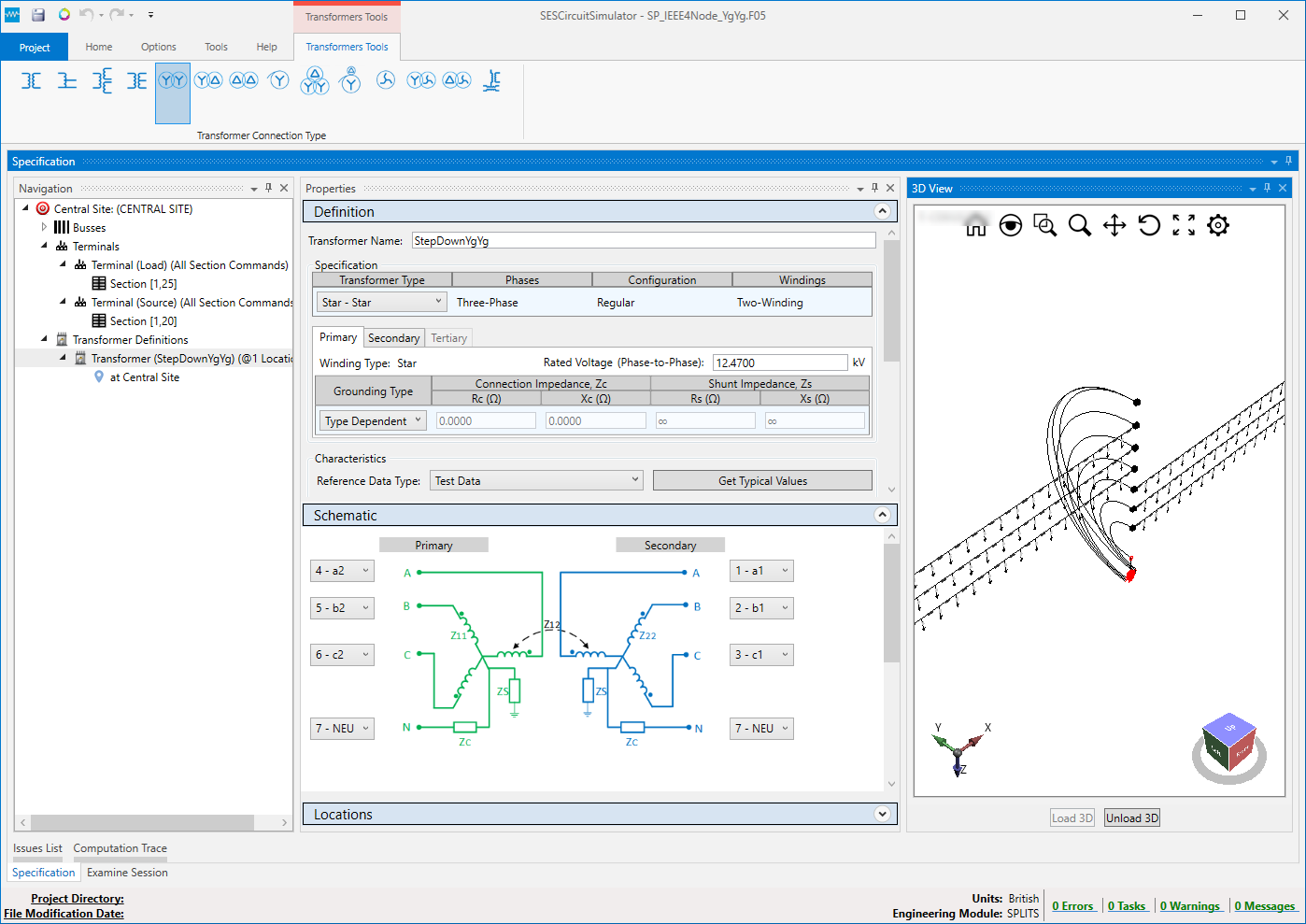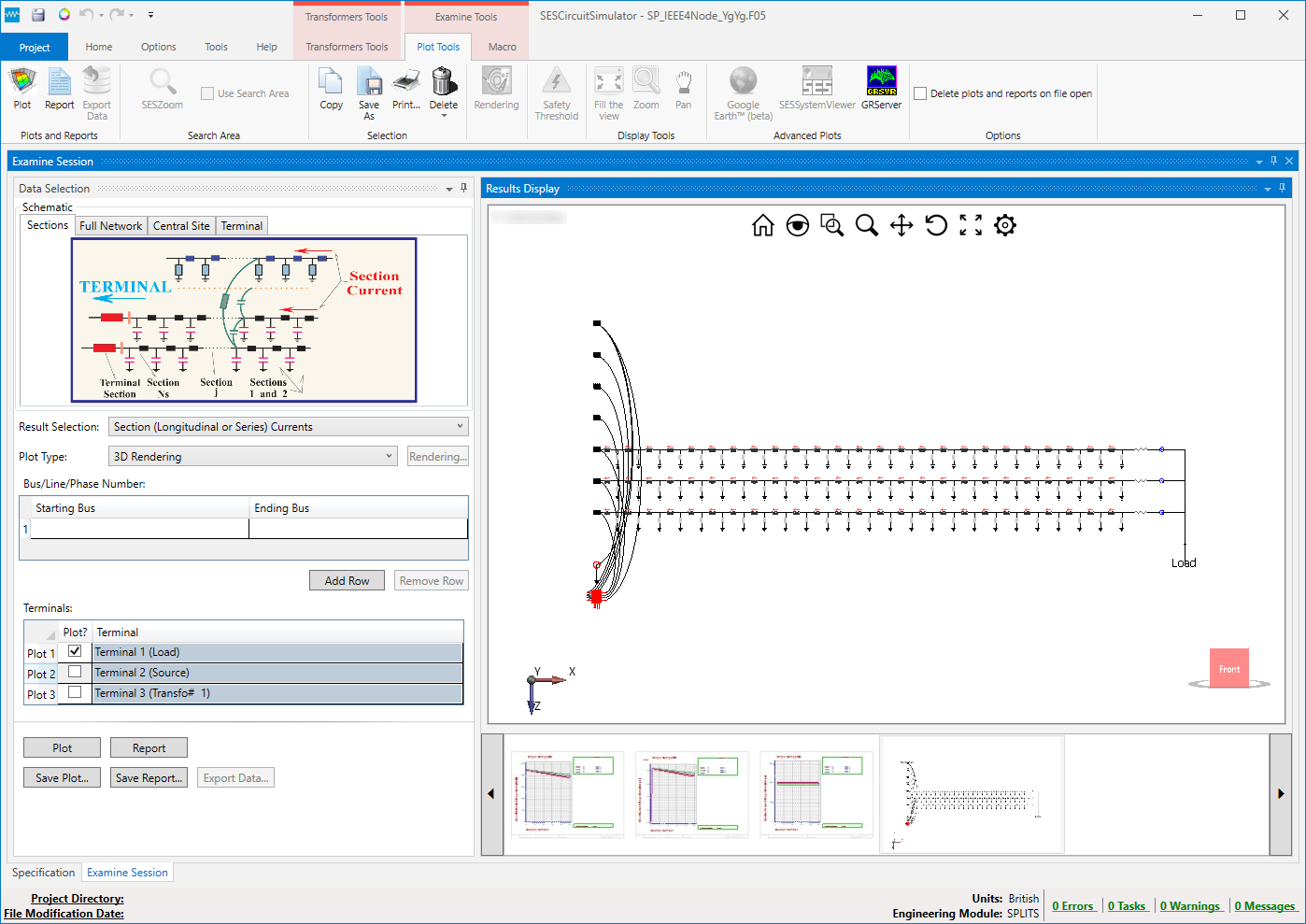The SPLITS computation module of CDEGS and ROW calculates load (whether balanced or not) and short-circuit current distributions in every section or span of an electric power network with multiple conductors, phases, and terminals.
Technical Description
SPLITS calculates load (whether balanced or not) and short-circuit current distributions in every section or span of an electric power network with multiple conductors, phases, and terminals. It also calculates induced voltages and currents between conductors due to both inductive and electrostatic coupling. SPLITS is one of the main engineering modules that drive the MultiLines and Right-of-Way (ROW) software packages.

SPLITS creates a detailed circuit model of every conductor in the right-of-way, including non-energized conductors and multiphase transformers, to calculate fault current distribution and induction effects.
Technical Highlights
-
SPLITS can report current and potential at the central site and at each terminal, as well as in every span or section of every static wire, neutral conductor, counterpoise, or pipeline associated with multi-circuit overhead lines and buried power cables including transformers at any locations.
-
SPLITS can take into consideration every connection made to a neutral conductor (such as to tower grounds and substation grounds) and every shunt connection existing between a phase conductor and the ground (such as the connected distributed capacitances, shunt capacitors or reactors, and tapped loads.)
-
Every conductor (or group of conductors) can be energized arbitrarily at each terminal station. This allows the simulation of DC, three-phase and multi-phase balanced or unbalanced networks without practical restrictions.
-
Normal conditions or single-phase, double-phase and multi-phase faults (to the ground or elsewhere) at any locations can be specified.
-
User can specify arbitrary span and impedances.

Resulting current and potential distribution from a SPLITS analysis.
Technical Features
-
An arbitrary number of terminal stations can be connected radially to a central station, which consists of an arbitrary number of busses and a grounding system with a user-specified impedance.
-
Central station busses can be interconnected or connected to the grounding system via arbitrary connection impedances.
-
Any number of spans can be defined between the central station and each terminal.
-
Single-phase, three-phase, and even multiphase balanced or unbalanced systems including various types of transformers located anywhere on the system can be specified.



